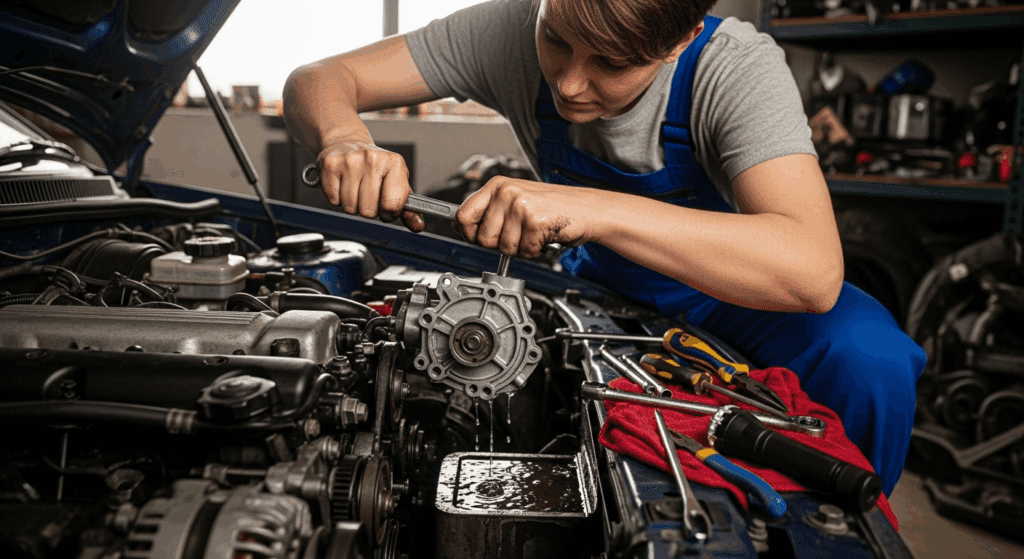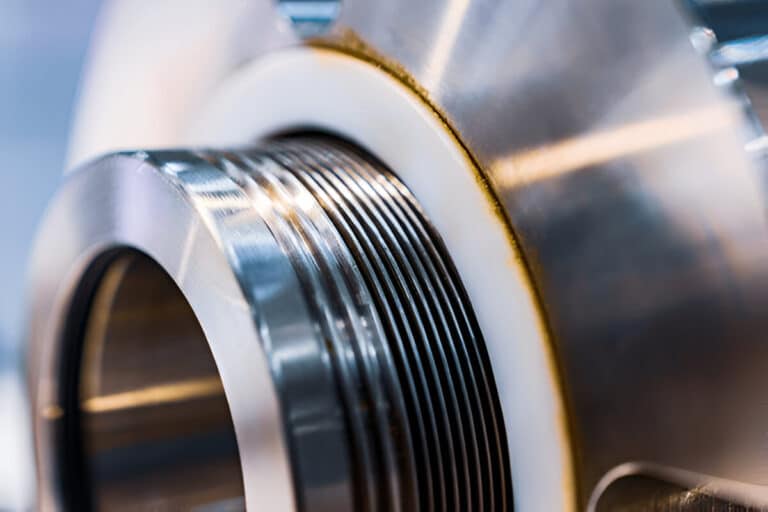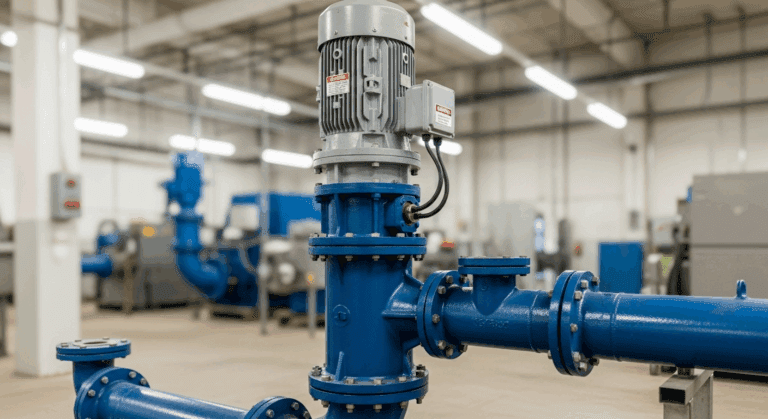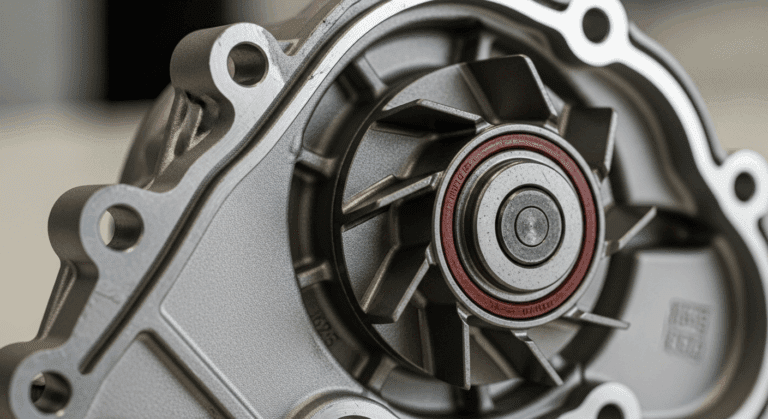Stop leak products can temporarily seal minor leaks in your cooling system, but they cannot fix a leaking water pump in most cases. The effectiveness depends entirely on where the leak is located and what type of cooling system you have.
Here’s the reality: if your water pump is leaking from its shaft seal or bearing, stop leak won’t help. These products only work on static leaks in non-moving parts, not on rotating components that are constantly under mechanical stress.

Pump Type and Location of Leak
The location of your leak determines whether stop leak is even worth trying. Most water pump failures happen at moving parts where sealants simply can’t stick or hold up under constant rotation and pressure.
Radiators, Heater Cores, Engine Block (Small Cracks)
Stop leak products actually work well for small leaks in radiators, heater cores, and minor cracks in the engine block. These are all stationary components where the sealant can settle into gaps and harden properly.
When you pour stop leak into your cooling system, it circulates with the coolant until it finds a leak. The temperature difference between the hot coolant and cooler outside air causes the product to solidify at the leak point, creating a plug.
Pump Shaft Seals / Rotating Seals
Water pump shaft seals are where stop leak products fail completely. These seals spin at thousands of RPMs while maintaining a watertight barrier between the coolant and the bearing assembly.
The constant rotation prevents stop leak from ever forming a stable seal. Even if it temporarily sticks, the mechanical action will quickly tear it away within hours or days.
Additionally, stop leak products can actually damage your water pump further by gumming up the weep hole – a small drain that’s designed to alert you when the seal starts failing. Once this clogs, coolant backs up into the bearing, causing catastrophic pump failure.
Open vs. Closed Systems
Open cooling systems have a radiator cap that vents to atmosphere, while closed systems are completely sealed with an overflow tank.
Closed systems work better with stop leak products. The constant pressure helps push the sealant into small leaks, and there’s less air exposure to cause premature hardening of the product.
Open systems pose a challenge because the stop leak product can settle in the radiator or overflow bottle. You might need to use more product or run the engine longer to ensure proper circulation.
When to Use Stop Leak vs. When to Replace
Stop leak products work best as temporary fixes or for minor leaks in hard-to-reach places. If you’re losing less than a cup of coolant per week and the leak is in your radiator or heater core, stop leak is worth trying.
Skip the stop leak if you see coolant dripping from your water pump, notice bearing noise, or lose more than a quart of coolant weekly. These symptoms indicate major failure that chemicals can’t fix.
FAQs
How long does stop leak take to work on a water pump?
Stop leak products typically work within 15-20 minutes of running the engine if they’re going to work at all. For water pump leaks specifically, you’ll know quickly whether it’s helping since most pump leaks won’t seal properly with these products.
Can stop leak damage my engine?
Stop leak won’t directly damage your engine, but it can clog cooling passages, causing overheating that leads to engine damage. It’s the secondary effects – blocked radiators, stuck thermostats, and clogged heater cores – that create problems.
How much stop leak should I use?
Follow the manufacturer’s instructions exactly – more is not better. Typically, one bottle treats systems holding 12-16 quarts of coolant. Using too much dramatically increases the risk of clogs and system damage.
Can I use stop leak as preventive maintenance?
Never use stop leak preventively. These products should only be used when you have an active leak. Adding them to a healthy system just introduces unnecessary chemicals that can cause clogs and reduce cooling efficiency.




